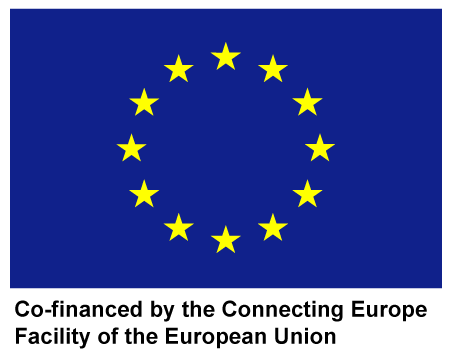
Cooperative Urban
Mobility Portal
Explore Connected and Cooperative Mobility

Cooperative
Urban Mobility Portal
Explore Connected and Cooperative Mobility
In-Vehicle Signage (IVS)
In-Vehicle Signage shows both static and dynamic information of road signs inside the vehicle. The service is meant to inform drivers via in-vehicle information systems on static and dynamic road signs as indicated on physical road signs and on additional digital displays along the road. Both advisory and mandatory road signs are in scope of the service.
Participating actors in In-Vehicle Signage include vehicle drivers, who receive information from the in-vehicle display or smartphones, road operators, who provide info on dynamic road signage, service providers, who disseminate related information, warnings and/ or guidance to vehicle drivers, and end users as trip planners may use information, and expected delays caused by these, to optimize their trip planning.
The objective of In-Vehicle Signage is to improve traffic safety via additional means to provide drivers with in-vehicle signage information.
Invisible
Your content goes here. Edit or remove this text inline or in the module Content settings. You can also style every aspect of this content in the module Design settings and even apply custom CSS to this text in the module Advanced settings.
Business models
Taking into account various stakeholders’ views, a list of business model blueprints that address current or future challenges of urban areas, together with their operating and value-capture scenarios depicting the inner-workings of the business models, and the exchange of costs-benefits among stakeholders, have been created for the In-Vehicle Signage service.
Invisible
Your content goes here. Edit or remove this text inline or in the module Content settings. You can also style every aspect of this content in the module Design settings and even apply custom CSS to this text in the module Advanced settings.
Architecture
ITS-G5
In case of ITS-G5 communication technologies dynamic/ static traffic signs information are sent from the Traffic Management Center to the Data Provider Back Office (or, alternatively, directly to the Service Provider Back Office). In order to disseminate the traffic signs information, the GeoMessaging is used, therefore the Communication Provider Back Office receives the data from the Service Provider Back Office and proceeds with the dissemination to the cooperative vehicles. The appropriate Roadside Unit (covering the desired dissemination region) receives the information to be broadcasted to the cooperative vehicles.
Cellular
In case of cellular communication technologies dynamic/ static traffic signs information are sent from the Traffic Management Center to the Data Provider Back Office (or, alternatively, directly to the Service Provider Back Office). In order to disseminate the traffic signs information, the GeoMessaging is used, therefore the Communication Provider Back Office receives the data from the Service Provider Back Office and proceeds with the dissemination to the connected vehicles.
Invisible
Your content goes here. Edit or remove this text inline or in the module Content settings. You can also style every aspect of this content in the module Design settings and even apply custom CSS to this text in the module Advanced settings.
Architecture schema
Detailed information about In-Vehicle Signage architecture can be found here.
Invisible
Your content goes here. Edit or remove this text inline or in the module Content settings. You can also style every aspect of this content in the module Design settings and even apply custom CSS to this text in the module Advanced settings.
Within the C-MobILE project the In-Vehicle Signage service is implemented in five Deployment Sites: Barcelona, Bordeaux, Newcastle, Thessaloniki, and Vigo.
Invisible
Barcelona
In Barcelona the In-Vehicle Signage service is implemented using cellular communication technology. This service provides information about speed limits in the whole city as well as on the main access roads (which is also displayed on the traffic panels). Applus IDIADA is the service provider receiving information from the mobility databases of both the City Council and the Servei Català de Trànsit’s and providing it to the road users through an App.
Invisible
Bordeaux
In Bordeaux the IVS service is implemented using both cellular and ITS-G5 communication technologies. This service is deployed in 3 different zones :
- The city center, where users are informed about the 30 km/h speed limit in schools’ proximity
- The ring road, where users are informed about travel times and other information about the traffic status
- The A63 highway, where traffic information is also available on varabile message sign (VMS) installed on gantries
The service provider for IVS is NeoGLS and the service is available through the Appl “CTD – Connected Mobility”.
Invisible
Copenhagen
Invisible
Newcastle
Invisible
Thessaloniki
In Thessaloniki IVS is provided as static and dynamic information to drivers. The service provider, the Hellenic Institute of Transport (CERTH-HIT), uses information from its digital maps and information retrieved from the Variable Message Signs (VMS) operated by the Region of Central Macedonia (http://www.pkm.gov.gr/), which is responsible for the operation of the Traffic Management Center. This information is then provided to drivers through the CERTH-HIT App (cmobile.imet.gr).
Invisible
Vigo
In Vigo the In-Vehicle Signage service is implemented using cellular communication technology. This service provides information displayed on existing Variable Message Signs directly in vehicles in order to optimize the reception of the transmitted message by the conventional sign.
CTAG is the service provider managing traffic information gathered from the Traffic Management Centre of Vigo and the Spanish Traffic Directorate (DGT) and distributing it in real time to drivers through CTAG GeoServer using the local App.




This website has received funding from the European Union’s Horizon 2020 Research and Innovation Programme
under Grant Agreement number 723311.
